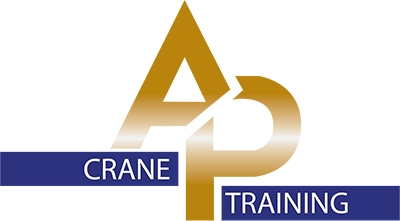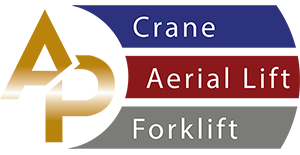


What are barge cranes? A barge crane is basically a boat with a crane mounted on it. Barges are normally big boat with flattened bottom that is primarily utilized to carry goods through rivers and canals. While certain barges are equipped with cranes for handling loads above water others are equipped with a separate cranes.
Sometimes barges are self-propelled and traveled by autopilot or they are almost regularly pulled by tow or a tugboat. Back in the days at the beginning of the industrial revolution, barges were also towed by animals that traveled in the same direction through the water on a towpath.
Barge cranes are a specialized type of crane used for moving large and heavy loads onto, off of, and between barges. These cranes have become essential pieces of equipment in the maritime industry due to their versatility and ability to perform a variety of tasks safely and quickly. Barge cranes come in a variety of configurations to accommodate different types of loads, including bulk material, containers, vehicles, and more.
Barge cranes are typically mounted on pontoons or dock-type platforms that float on the surface of a body of water. Pontoons do not require any ground-level supports or foundations. This makes them ideal for use in shallow waters where conventional docks are not available. The pontoon mount also allows the crane to move freely from one location to another as needed.
Barge cranes work in a unique way pumping river water in chambers on the barge called ballast tanks or counterweight tanks. These tanks are used to fill so they can weigh down the crane's center of gravity. So when they are filled it allows the crane to safely lift loads when floating on top of the water.
While animals used to be involved and now they no longer are, these flat-bottomed barges are generally used in modern shipping transportation, essentially because hauling by barge is straightforward and cost-effective. These barge cranes are essentially appealing advantages in situations where the load is overweight or too big. Being a barge, which normally averages in size 195 by 35 ft it has the power to up to 1,500 tons weight limit.
Inland barges include the majority of barges working on inland waters. These kinds of barges are designed to run on bays, rivers, canals, and inland lakes. Inland barges are the most economical method of moving oversized, massive-volume, or heavyweight loads.
Deck barges are intended to carry loads on their floor and vary in capability and architectural design, depending on its proposed use. Deck barges can support massive loads, rocks, palletized stuff, animals, cattle, or even rocket boosters. In unusual situations, some hazardous liquid loads may be carried in the internal spill-proof sections. Deck barges can also be used as production floors. Serving as an additional workspace. Some deck barges are equipped with raised decks.
Spud and barge cranes are specifically built to sustain a practical excavator crane. Spud and crane barges typically have a boxed shape barge to support the best flotation while operating a crane on board.
The most common form of barge crane is the gantry crane, which has two parallel sets of beams that support a trolley bridge carrying the hoisting machinery. Gantry cranes can be used for moving and loading cargo over considerable distances—up to 1 kilometer—and can lift loads up to 800 tons. These cranes are often equipped with multiple hoist systems for increased capacity and more efficient operations.
In addition to gantry cranes, there are other types of barge cranes such as floating derricks and A-frame derricks.
Floating derricks consist of a hull-mounted above the water line onto which a boom is attached at one end and a trolley bridge at the other end that carries the hoists.
Floating derricks can be used for lifting loads up to 500 tons over short distances--usually less than 100 meters--from one barge to another without having to move either vessel. They also provide greater stability than gantry cranes since they remain stationary when transporting cargo from one point to another due to their lower center of gravity compared with gantry cranes.
A-frame derricks are similar in design but instead have an inverted “A” shaped frame that supports two booms connected by cross beams on top that carry either two or three hoists depending on size requirements.
A-frame derricks tend to be smaller than floating or gantry cranes but still provide good stability when transferring cargo between boats at sea because they remain stationary relative to both vessels due to their low center of gravity and asymmetric shape design providing additional counterweighting effect when lifting heavy payloads in rough seas conditions making them ideal for offshore operations where normal docks are not available or impractical due weather or other factors like high tidal range areas such as estuaries near river mouths or delta regions with considerable tidal variations from day to day making it impractical if not impossible for conventional dockside operations.
Barge Cranes have been used since ancient times but modern technology has made them much more efficient allowing larger payloads to be moved faster with greater accuracy reducing costs significantly over time as well as improving safety features making it easier for operators working around these devices. Newer models incorporate computerized controls allowing operations via remote control, therefore, reducing personnel exposure risk. Some models even incorporate automatic positioning systems allowing precise tracking positions without manual intervention thus eliminating human error associated with traditional manual control systems.
Barge Cranes in Recreational Activities
Aside from industrial applications Barge Cranes have been increasingly used in recreational activities as well particularly related to boat launching, mooring operations, slipway repair, boat recovery, etc all tasks which require lifting heavy objects out of or into bodies of water usually too shallow or too exposed rocky structures making it impossible or impractical using any other method. Most popular recreational marine activities like sailing, powerboating, jet skiing, cruising, etc rely heavily on safe launch & retrieval methods provided by these specialized pieces of equipment ensuring people’s safety while participating in these activities, especially during bad weather conditions where waves may present additional danger factor associated with regular manual launch & retrieval processes putting lives at risks especially if untrained personnel was assigned this duty.
Finally, barge crane technology has dramatically evolved over time offering many interesting facts ranging from construction materials developments offering lighter weight higher strength materials allowing heavier payloads yet reducing overall size & footprint necessary for installation operations (i e wind farms ) allowing operation close proximity to coastal areas thus conserving precious space while benefiting local communities by creating new job opportunities related workforce involved this type projects while preserving natural resources nearby. Other advances include new fastening mechanisms designed to survive extreme weather conditions such as hurricanes earthquakes floods & tsunamis common areas are prone to these events thus ensuring continuous availability of services offered by these facilities even under some worst-case scenarios and improving the overall probability of projects success further increasing its impact within local economies.
Get crane training courses on different kinds of barges; deck, vessel, and floating cranes. Barge cranes training for individuals and employers throughout the US online and onsite. Contact us today at (888) 501-1355.

An All Purpose Safety Training Solutions Company